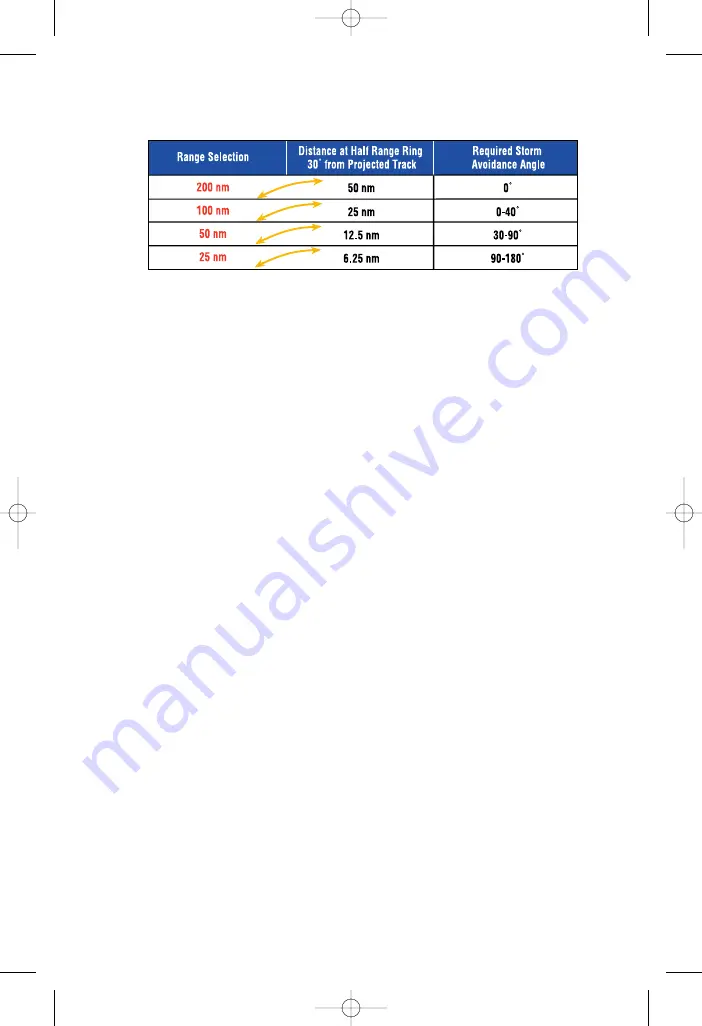
PILOT’S
GUIDE
29
STRIKE FINDER
DIGITAL WEATHER AVOIDANCE
Table 2. One-Quarter Rule Table
Rule-Of-Thumb
A good rule-of-thumb, is to
avoid all storms in the 100 nm range view
by 30-degrees
. In addition, an extra 10-degrees is advisable for added
safety. This range setting and angle will position the aircraft approximately
40 miles from the storm, thereby providing a better margin of safety. A storm
encountered on the 100 nm range view, that has a 30-degree avoidance
angle from the intended track, is considered to be at a safe distance. Use
this range setting when planning a deviation around thunderstorms.
Storms in the 25 nm range view are too close. The “required storm
avoidance angle” is much greater than at the 100 nm range view.
(See
Table 2). For safety reasons, do not use the 25 nm range view for
deviation planning.
Compensate For Wind Drift
When flying in cross wind conditions, the avoidance angle is affected
because the airplane’s track and heading are different.
Figure 23 A-B (p.30)
,
illustrates conditions likely in the case of air mass thunderstorms.
Drift Near Air Mass Thunderstorms
In the example shown in
Figure 23-A
(p.30), a cross wind blowing the plane
away from the storm, has increased the avoidance distance or angle from
30-degrees to 44-degrees. The aircraft may safely navigate past the
thunderstorm.
The amount of increased distance as a result of a cross wind component
will vary based on wind speed and direction. The increased distance,
may or may not permit the aircraft to pass a thunderstorm at a safe
distance. Monitor each thunderstorm associated with a cross wind
component and adjust heading accordingly to facilitate a safe deviation
around thunderstorms.
Strike Finder Pilot's Guide fix 9/19/05 10:59 AM Page AH
















































